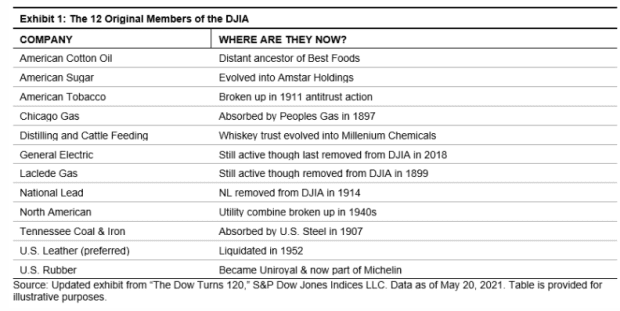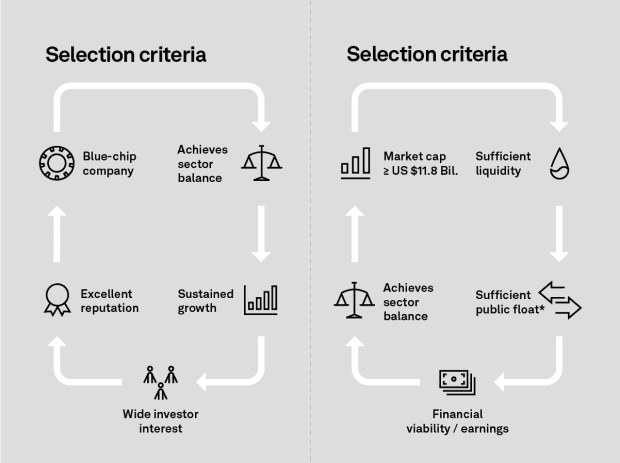Happy Birthday, Dow Jones Industrial Average! It’s the blue-chip index’s quasquicentennial!
The blue-chip Dow
DJIA,
+0.19%
was first published May 26, 1896 and has become one of the world’s most prominent and widely watched equity benchmarks.
As S&P Dow Jones Indices, who runs the Dow, explains it, the index was created by Charles Dow, who co-founded the Dow Jones, publisher of The Wall Street Journal.
Originally, the Dow consisted of 12 companies but has now grown to 30 companies and is a price-weighted index, compared with the younger S&P 500
SPX,
+0.27%,
launched in 1957, and the Nasdaq Composite
COMP,
+0.64%
indexes, launched in 1971, which are both weighted by market capitalization.
Here are the 12 original members of the Dow:

S&P Dow Jones Indices
Of that original dozen, only General Electric
GE,
+0.65%
retains any semblance of its original form.
The Dow’s price-weighting means the value of the stock gauge is determined by the price changes of its components, rather than percentage changes. The overall value of the index is computed by adding the price of the components and dividing by the so-called Dow divisor.
The selection process for the Dow has sometimes been equated to that of stock picking, leading some to make the case that the Dow, compared against the S&P 500, is more equivalent to an actively managed fund than an index.
“The DJIA’s stock selection isn’t governed by quantitative rules. Instead, the Averages Committee makes constituent changes on an as-needed basis,” wrote Hamish Preston, director of U.S. equity indexes at S&P Dow Jones Indices, in a Wednesday report.
The Dow’s components must necessarily be members of the S&P 500 but there are a host of differences in selection process that the S&P Dow Jones Indices outlines here:

S&P Dow Jones Indices
The index has risen an average of 7.69% each year and notched 1,464 record closes, writes The Wall Street Journal, citing Dow Jones Market Data.
Interestingly, the 125-year-old index isn’t the oldest. That title is reserved for another Dow creation, the Dow Jones Railroad Average, now known as the Dow Jones Transportation Average
DJT,
+0.41%,
which was first compiled in 1884.
Still, the Dow industrials have captured the attention of indexes that are viewed as much broader and more representative of the market. Searches for the Dow trump that of other indexes, including the S&P 500 and the Nasdaq. And when the market tumbles, searches for the Dow tend to eclipse those for any other stock gauge, including terms like “stock market.”

Google Trends
That said, it is perhaps foolhearty to think that the Dow will retain its prominence for another century, in a rapidly evolving financial landscape. But it is worth celebrating the lengthy run of the equity market index.


